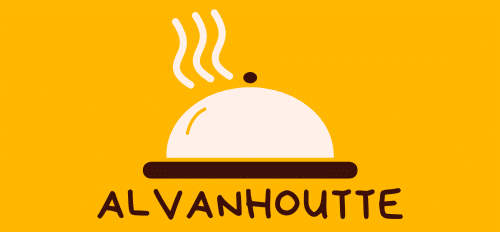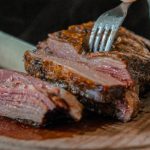Chateauneuf-du-Pape stands as a captivating jewel in France’s renowned Rhône Valley, where centuries-old vineyards shape some of the world’s most distinguished wines. Its unique terroir, blending diverse soils and Mediterranean climate, crafts signature blends treasured for their depth and character. Exploring this region reveals not only exceptional wine but an immersive experience of culture, history, and gastronomy that enrich every visit beyond the bottle.
Highlights of Chateauneuf-du-Pape Wine Regions
Nestled in the heart of southeastern France, Chateauneuf-du-Pape stands out as one of the most prestigious and historic wine regions in the world. Recognized as a part of the UNESCO wine areas, this region boasts centuries of viticultural tradition dating back to the 14th century when Popes resided here, cementing its historical and cultural significance in winemaking.
A lire en complément : Unveiling the secrets of chateauneuf-du-pape wine regions
The top vineyards of Chateauneuf-du-Pape play a crucial role in shaping the region’s wine culture. Famous estates such as Château de Beaucastel and Domaine du Vieux Télégraphe have established their legacies through exceptional quality and innovation, influencing global perceptions of Rhône Valley wines. These vineyards contribute to the diversity of grape varieties permitted by the appellation—making the wines both complex and unique.
What truly defines the wine region highlights of Chateauneuf-du-Pape is its distinctive landscape. Characterized by large, rounded galets (pebbles) that cover vineyard soils, this unique terroir facilitates optimal heat retention and drainage. Additionally, the area’s limestone hills and Mediterranean climate create ideal growing conditions that enhance grape ripening and flavor concentration, directly influencing the profile of Chateauneuf-du-Pape wines.
Dans le meme genre : What is the most reliable material for oven racks to support heavy roasting pans?
For those eager to explore the intricacies of this exceptional wine region, more detailed insights can be found through the story of châteauneuf-du-pape, offering an in-depth look at its landscapes, vineyards, and lasting legacy.
Unique Wines and Terroir
Châteauneuf-du-Pape wines are celebrated for their remarkable complexity, a direct outcome of the distinctive terroir and the rich diversity of grape varieties grown in the region. The terroir here is a harmonious blend of factors including the soil, climate, and centuries-old traditional winemaking techniques that collectively shape the unique character of these wines.
The soils of Châteauneuf-du-Pape are notably varied; stony, sandy, and clay-rich terrains intermingle with the iconic round galets roulés stones that cover the vineyards. These stones retain heat during the day and release it at night, aiding in grape ripening. This unusual soil composition contributes to the deep, rich flavors and robust structure synonymous with Châteauneuf-du-Pape wines.
In terms of grape varieties, the region proudly cultivates thirteen permitted types, with Grenache, Syrah, and Mourvèdre dominating the blends. Grenache provides a round, fruity core, Syrah lends spiciness and color, while Mourvèdre adds texture and depth. The signature blends often balance these varieties to produce wines that are both powerful and elegant.
Châteauneuf-du-Pape wines typically exhibit a full-bodied profile with flavors ranging from ripe red fruits to subtle herbal notes, encapsulating the warm Mediterranean climate. They are prized for their ability to mature gracefully, unveiling layers of complexity over time.
Visiting Vineyards and Wine Estates
Discovering the charm of vineyard tours and exploring prestigious wine estates offers an unparalleled way to immerse yourself in the Châteauneuf-du-Pape region. These experiences provide visitors a unique opportunity to grasp the heritage and craftsmanship behind each bottle. Many estates offer guided tours that showcase the intricate winemaking processes, from the vine to the cellar.
During such tours, visitors can engage in exclusive tastings, sampling a range of vintages that highlight the distinctive qualities of Châteauneuf-du-Pape wines. These tastings often include detailed explanations about grape varieties, terroir, and aging methods, making the experience both educational and enjoyable.
To make the most of your visit, consider scheduling tours during spring or early autumn, when the vineyards are particularly vibrant, and the harvest season adds a special ambiance. Additionally, some wine estates emphasize seasonal events where you can taste limited-edition wines or pairings that elevate the traditional Châteauneuf-du-Pape experiences.
For an immersive encounter, many estates recommend booking in advance, allowing guides to tailor the visit to your interests whether it’s learning about organic viticulture or exploring rare blends. This customization enriches your appreciation for the nuances of the wines and the region’s history.
Cultural and Gastronomic Attractions
Explore the rich world of wine tourism in the Châteauneuf-du-Pape region, where local gastronomy perfectly complements its renowned reds. Visitors relish the harmony of hearty Provençal dishes paired with the region’s signature wines, creating an unforgettable culinary experience. Staples such as lamb, ratatouille, and truffle-infused dishes elevate the intense flavors of Châteauneuf-du-Pape wines, enhancing both the food and the glass.
Wine festivals play a pivotal role in showcasing the area’s culture. Annual celebrations immerse guests in wine festivals that highlight traditional winemaking methods and offer tastings that bring the terroir to life. These events allow travelers to engage directly with winemakers, deepening their appreciation of the craft and heritage behind each bottle.
Beyond the palate, Châteauneuf-du-Pape’s cultural attractions reveal a tapestry of art, history, and architecture intrinsically linked to wine. Historic estates and medieval castles dot the landscape, telling stories of viniculture’s evolution through the centuries. Artisans preserve ancient techniques, while museums exhibit winemaking tools and celebrate the region’s lasting legacy.
Practical Tips for Travelers and Wine Enthusiasts
When planning your visit to the famed Châteauneuf-du-Pape wine region, timing is crucial. The best times to visit are during the spring and early autumn months. These periods offer pleasant weather and fewer crowds, allowing for a more immersive experience. Traveling in summer can mean high temperatures and busy vineyards, which might impact your enjoyment.
For those wondering, where to buy Châteauneuf-du-Pape wine, authenticity is essential. The most reliable places are local wine shops in the region and certified wineries. Purchasing directly at a vineyard not only guarantees authenticity but also provides a chance to taste different vintages and learn about the winemaking process. Some travelers prefer specialty wine retailers in major cities, but be cautious ensure that the seller offers genuine Châteauneuf-du-Pape labels.
Visitor etiquette is a key component of a memorable trip. When touring vineyards or tasting sessions, it’s respectful to book appointments in advance. Dress comfortably but neatly, as many châteaux appreciate visitors who show regard for the setting. Also, avoid strong perfumes or fragrances that could interfere with the wine tasting experience. Engaging with the winemakers by asking thoughtful questions about terroir and grape varieties enriches your visit, making it both educational and enjoyable.
Overall, blending travel advice with a focus on buying Châteauneuf-du-Pape wine and practicing proper visitor etiquette ensures that your journey is seamless and rewarding.










